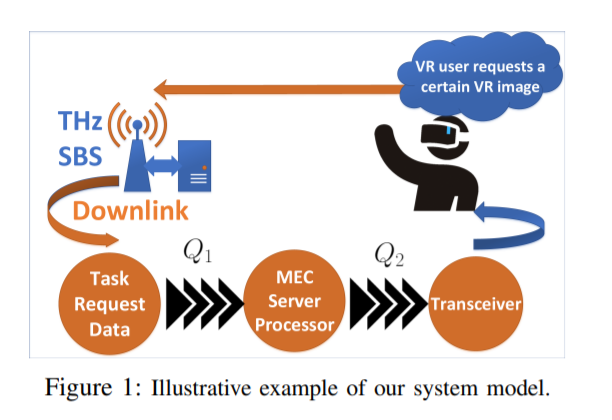On the Reliability of Wireless Virtual Reality at Terahertz (THz) Frequencies
PubDate: May 2019
Teams: Virginia Tech;University of Dublin
Writers: Christina Chaccour, Ramy Amer, Bo Zhou, Walid Saad
PDF: On the Reliability of Wireless Virtual Reality at Terahertz (THz) Frequencies

Abstract
Guaranteeing ultra reliable low latency communications (URLLC) with high data rates for virtual reality (VR) services is a key challenge to enable a dual VR perception: visual and haptic. In this paper, a terahertz (THz) cellular network is considered to provide high-rate VR services, thus enabling a successful visual perception. For this network, guaranteeing URLLC with high rates requires overcoming the uncertainty stemming from the THz channel. To this end, the achievable reliability and latency of VR services over THz links are characterized. In particular, a novel expression for the probability distribution function of the transmission delay is derived as a function of the system parameters. Subsequently, the end-to-end (E2E) delay distribution that takes into account both processing and transmission delay is found and a tractable expression of the reliability of the system is derived as a function of the THz network parameters such as the molecular absorption loss and noise, the transmitted power, and the distance between the VR user and its respective small base station (SBS). Numerical results show the effects of various system parameters such as the bandwidth and the region of non-negligible interference on the reliability of the system. In particular, the results show that THz can deliver rates up to 16.4 Gbps and a reliability of 99.999% (with a delay threshold of 30 ms) provided that the impact of the molecular absorption on the THz links, which substantially limits the communication range of the SBS, is alleviated by densifying the network accordingly.


